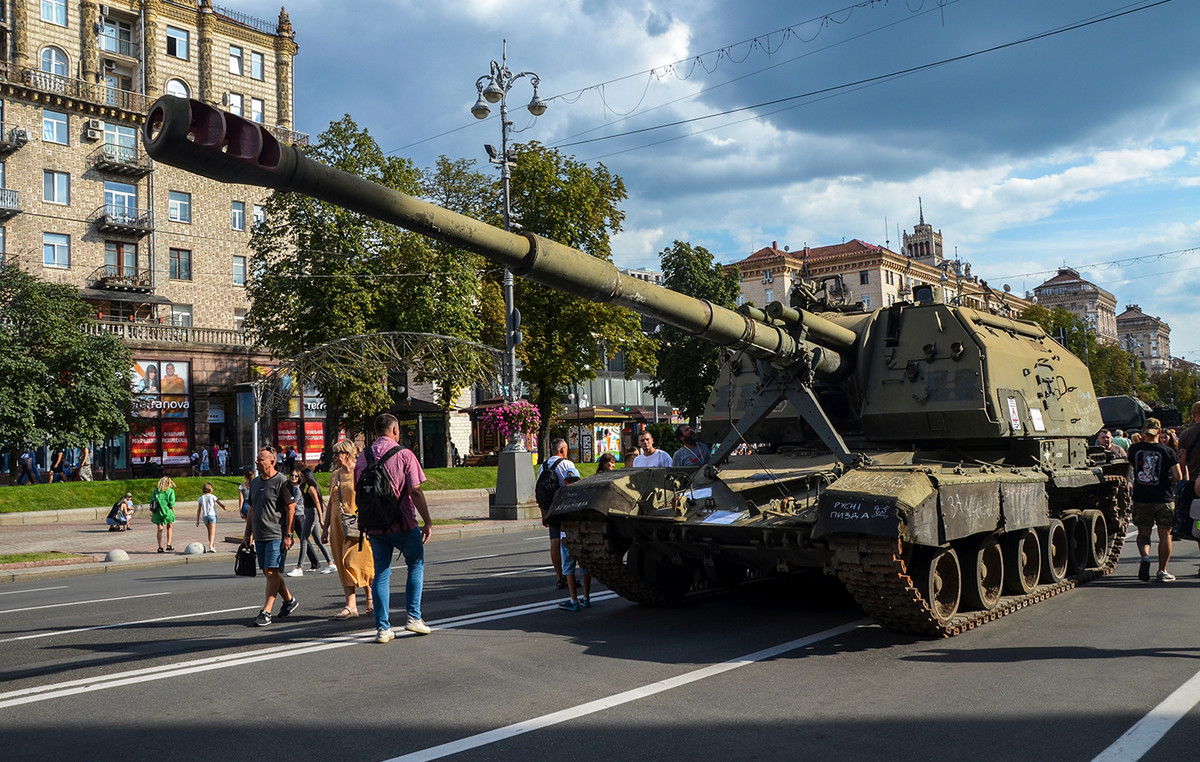Russia’s currency fell to a record low against the US dollar on Monday as the country’s financial system reeled from crushing sanctions imposed by Western countries in response to the invasion of Ukraine.
The ruble lost more than 30% of its value to trade at 109 to the dollar at 4:30 am ET, after a previous drop of up to 40%. The start of trading on the Russian stock market has been postponed.
The latest flurry of sanctions came on Saturday, when the United States, the European Union, the United Kingdom and Canada said they would kick some Russian banks off Swift, a global financial messaging service, and “cripple” the assets of the central bank of Russia. Russia.
President Vladimir Putin’s government has spent the last eight years preparing Russia for tough sanctions, building a $630 billion war chest in foreign currency reserves, but its “fortress” economy is now under unprecedented attack and at least some of it. of that financial firepower is now frozen.
“We will also ban Russia’s central bank transactions and freeze all its assets to prevent it from funding Putin’s war,” European Commission President Ursula von der Leyen said in a statement on Sunday.
The currency’s collapse prompted the Russian central to implement emergency measures again on Monday, including a big increase in interest rates from 9.5% to 20%.
“External conditions for the Russian economy have changed dramatically,” the bank said in a statement. “This is necessary to support financial and price stability and protect citizens’ savings from depreciation,” the bank added.
Russia is one of the main exporters of oil and gas, but many other sectors of its economy depend on imports. As the ruble’s value drops, they will become much more expensive to buy, driving up inflation.
The crackdown on its major banks and the exclusion of some of them from the SWIFT secure messaging system that connects thousands of financial institutions around the world will also make it harder to sell exports.
Bank run?
Analysts have warned that the turmoil could lead to a run on Russian banks as savers try to secure their deposits and accumulate cash.
“This weekend’s events now mean that no G7 bank will be able to buy Russian rubles, sending the currency into free fall, with the end result we could see a massive inflationary shock unfold within Russia,” Michael Hewson, Chief Analyst of CMC Markets UK, said in a note.
“A run on Russian banks within the country appears to be already starting as citizens fear their credit cards will no longer work,” he added.
The Russian central bank last week intervened in currency markets to try to prop up the ruble. And on Friday, it said it was increasing the supply of banknotes to ATMs to meet the growing demand for cash. Russian state news agency TASS reported that several banks had increased withdrawals since the invasion of Ukraine, mainly of foreign currency.
“These are the conditions under which local bank runs begin,” wrote Neil Shearing, chief economist at Capital Economics. “The Russian central bank this morning raised interest rates to 20%, but other measures (eg limits on deposit withdrawals) are still possible today. now seems likely.”
— Charles Riley, Laura He and Vasco Cotovio contributed reporting.
Source: CNN Brasil
I am Sophia william, author of World Stock Market. I have a degree in journalism from the University of Missouri and I have worked as a reporter for several news websites. I have a passion for writing and informing people about the latest news and events happening in the world. I strive to be accurate and unbiased in my reporting, and I hope to provide readers with valuable information that they can use to make informed decisions.







